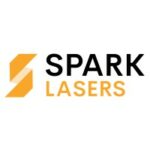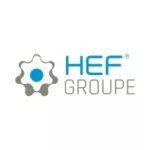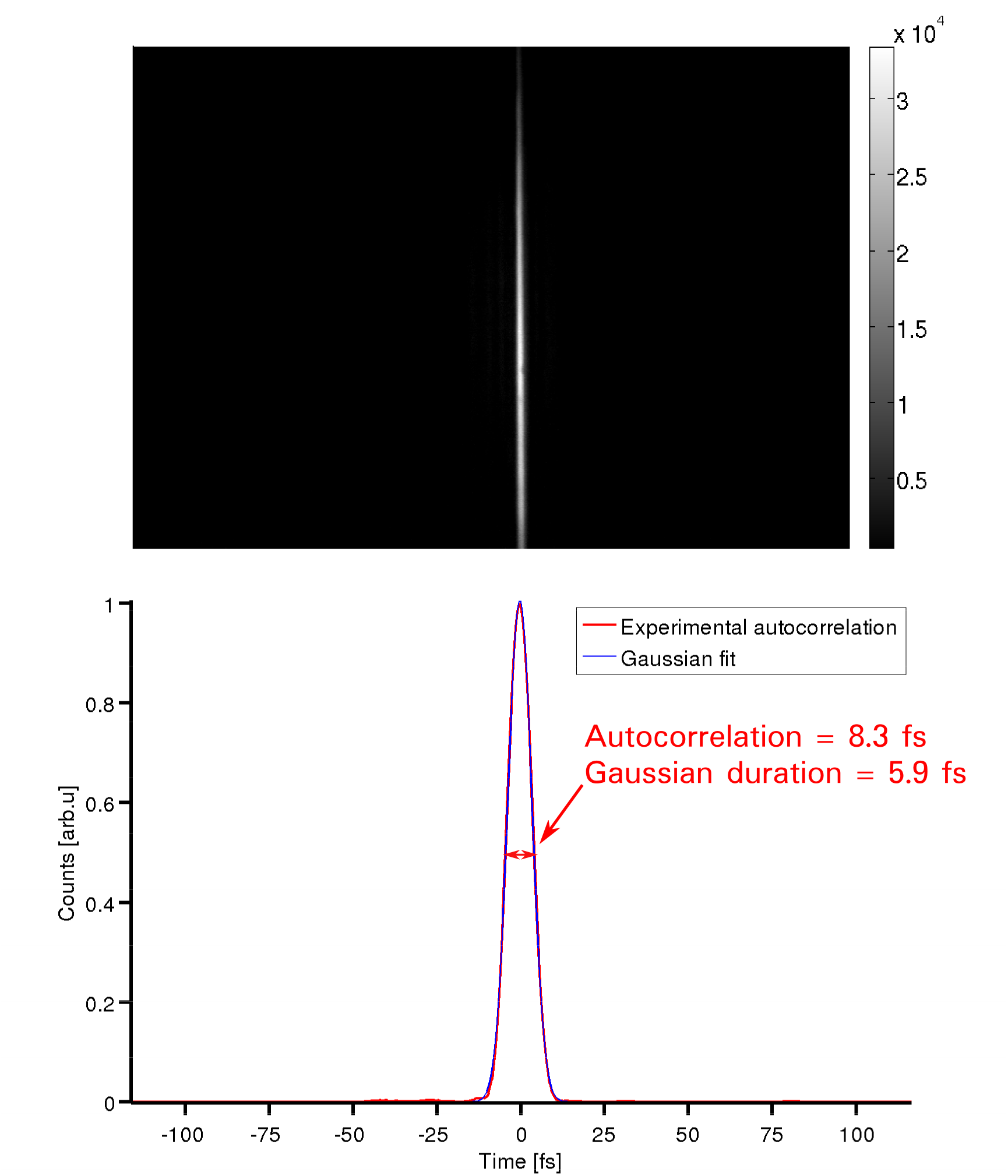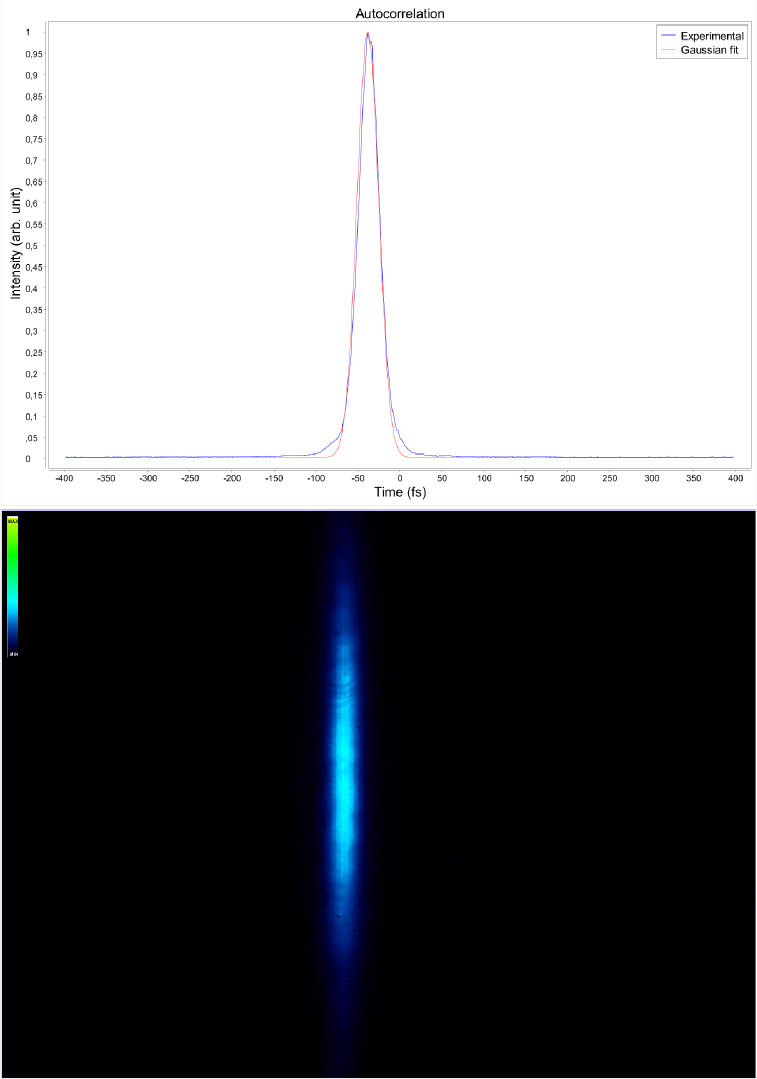ROC Autocorrelator Single-Shot
Pulse duration measurement with unmet user-experience
ROC (Row Optical AutoCorrelator) is a compact and robust inline setup to measure single-shot autocorrelation traces. Specifically designed to offer the easiest user experience, they cannot be misaligned and no calibration or tweaking is needed. Also, they are easily transportable. And yes, they are rock-solid! Besides those advantages, the ROC autocorrelators provide excellent technical performances and highly accurate measurements. The ROC autocorrelators are available for different wavelength ranges and several pulse durations.
![]() Single-shot
Single-shot
For unrivaled speed and shot-to-shot pulse measurements
![]() Ultra easy to use
Ultra easy to use
Less than 2 minutes setup time, no calibration necessary, onboard ND filter wheel (optional)
![]() Multifunctional
Multifunctional
Any repetition rate, from fs to ps, broad wavelength range
![]() Time-trace
Time-trace
Our history graph show pulse duration changes over time – perfect for unattended long-term measurements
![]() Spatially-resolved measurements
Spatially-resolved measurements
Measurement of beam profile and pulse duration distribution over one diameter
Spark Lasers develops and manufactures high-performance ultrafast lasers, renowned for their excellent pulse temporal quality. One of the keys to achieving this excellence lies in the metrology of our laser sources. To meet our demanding pulse quality goals, we extensively rely on Femto Easy technology. We utilize several systems (Fast FROGs, ROC autocorrelators) in both our R&D and Production departments. Their robustness, ease of use, and performance are instrumental to our daily operations.
The femtosecond pulse duration measurement solution from Femto Easy (ROC autocorrelator) is easy to use, fast and reliable. The STAR software also establishes a new standard in terms of user friendliness and ease of use.
We are using the ROC autocorrelator. The device is easy to align and perfectly suited for temporary installation in a machine, due to its compact size. In case of problems and questions, the customer support of Femto Easy is reactive and provides good solutions.
Thanks to the ease of use of the single-shot ROC Autocorrelator, our approach of beam characterization changed dramatically. Given the speed with which reliable results can be obtained and the robustness of the device, we now use our Femto Easy instruments for the monitoring of several machines. The STAR software is excellent on its own right, and the API makes it simple to integrate Femto Easy devices in our interface.
We use the ROC single-shot autocorrelator from Femto Easy. This systems is robust and easy to use, hence perfect for a laboratory use with multiple users.
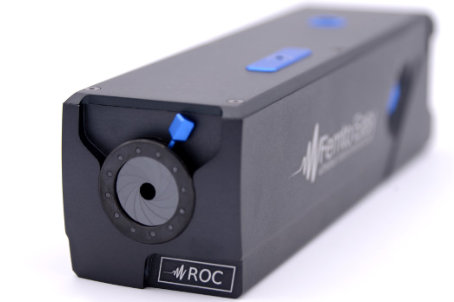
Compact ROC autocorrelator
With 55 x 56 x 195 mm in size, the ROC embodies design, UX-experience and robustness in the compact class of autocorrelators.
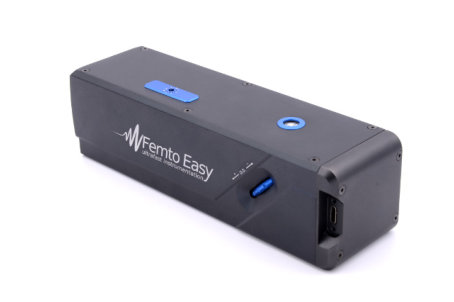
Alignment in seconds
Simply bring the ROC to the correct beam height and insert it into the beam
Technical specifications
Femto Easy’s ROC single-shot pulse measurement tool comes with a range of unique features and configuration options. From femtoseconds to picoseconds. Compare the technical specifications and discover your favorite model.
| ROC models | FC | FS10 | FS20 | PS1 | PS3 | PS5 | PS10 |
|---|---|---|---|---|---|---|---|
| Pulse duration min | 5 fs | 10 fs | 20 fs | 50 fs | 70 fs | 100 fs | 300 fs |
| Pulse duration max | 150 fs | 250 fs | 500 fs | 1 ps | 3 ps | 5 ps | 10 ps |
| Accessible spectral range (nm)1 | 480 - 2100 | 480 - 2100 | 480 - 2100 | 480 - 2100 | 480 - 2100 | 480 - 2100 | 800 - 2100 |
| Dimensions (mm) | 55 x 56 x 233 | 55 x 56 x 265 | 55 x 56 x 233 | 55 x 56 x 195 | 55 x 56 x 195 | 55 x 56 x 195 | 55 x 56 x 195 |
| Input pulse repetition rate2 | Single-shot to GHz | ||||||
| Single-pulse measurement | up to 125 kHz laser repetition rate (with Trigger and Enhanced Detection options, or 18 kHz without) | ||||||
| Min input pulse energy3 | Single-shot : 1 µJ at 30 fs 40 MHz : 500 pJ at 30 fs | Single-shot : 1 µJ at 300 fs 40 MHz : 300 pJ at 300 fs |
|||||
| Variable ND Filter | yes | ||||||
| Iris Aperture | yes | ||||||
| Input polarization | linear horizontal (vertical if mounted on the side) | ||||||
| Detection | CMOS 12 Bits - 3 Mpx - 72 dB | ||||||
| PC Interface | USB 3.1 | ||||||
| Beam height (mm) | Adjustable from 30 mm | ||||||
2 The measurements are averaged over several pulses for laser with repetition rate higher than 62.5 kHz (with Enhanced Detection option). Custom versions available on request. For lower power and wider pulse duration ranges, Multi-Shot scanning versions are available (MS-ROC).
3 Those values give an order of magnitude for a 1030 nm laser. The exact sensitivity depends on many parameters (pulse duration, beam profile, wavelength…)
Optional Features
Phase matching
Default ROC configuration works for a given central wavelength. Phase matching allows tuning the SHG crystal to measure different central wavelengths with the best SNR
Trigger
Synchronization of the ROC detection to an external signal for accurate laser single pulse extraction up to 36 kHz (125 kHz with the Enhanced detection option)
Integrated attenuation
Internal ND filter wheel can be added for built-in attenuation. Useful in the case of measuring low rep rate, high energy (mJ) laser sources
High dynamic range
Software mode to increase the dynamic of the ROC signal acquisition from 12 to 16 bits. Not compatible with pure single-shot measurement as 2 images are necessary to build one autocorrelation trace
Enhanced detection
Replacement of the default camera embedded in the ROC by a higher performance one to increase the specifications of the system (better temporal resolution, single-shot extraction up to 125 kHz with the Trigger option)
Software
All key data conveniently displayed: The Femto Easy software has been designed to be user friendly and intuitive. This is a modern software compatible with touchscreen that can run either under Linux or Windows. It allows distant control of the devices via PC, tablet or smartphone. We can also provide custom software developments upon request.
Single-Shot Autocorrelator in the Lab
Open video in a new tab (no access to Youtube required)
Pulse duration measurement made easy
Our engineers employ the latest technologies and frameworks to create autocorrelator solutions that combine a strong easy-to-use experience with high scientific performance.
Measurement example under challenging conditions: few cycle pulses
Few cycle pulse at 5.9 fs imaged with our fully nonachromatic autocorrelator design
This is an autocorrelation measurement sample of ultrashort pulse that has been performed in Politecnico di Milano with our short pulse model autocorrelator ROC FC. On the top, the raw image of the spatially resolved autocorrelation trace.
At the bottom, the analysed autocorrelation trace integrated over the spatial coordinate. The experimental data (in red) are fitted by a Gaussian function (in blue). The full width at half maximum of the autocorrelation trace is 8.3 fs. The corresponding Gaussian pulse duration is 5.9 fs.
Low energy pulse of Ti:Sapph with 0.3 nJ per pulse
Femtosecond Ti:Sapph oscillator at LCAR shot with a ROC FC autocorrelator:
The average power used for the measurement was with only 20 mW at 62 MHz repetition rate. It means that in this conditions 0.3 nJ per pulse was enough to get a clean measurement. At the bottom, the raw image of the spatially resolved autocorrelation trace.
On the top, the analysed autocorrelation trace integrated over the spatial coordinate. The experimental data (blue) are fitted by a Gaussian function (red). The FWHM of the autocorrelation trace is 30.4 fs for a Gaussian pulse duration of 21.5 fs.

